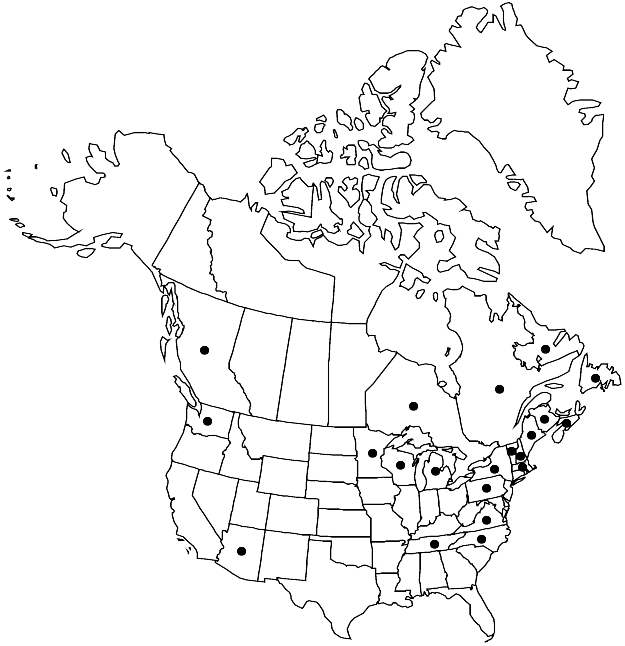Difference between revisions of "Homalia trichomanoides var. trichomanoides"
Treatment appears in FNA Volume 28. Treatment on page 609.
FNA>Volume Importer |
imported>Volume Importer |
||
| (One intermediate revision by the same user not shown) | |||
| Line 42: | Line 42: | ||
|publication year= | |publication year= | ||
|special status= | |special status= | ||
| − | |source xml=https:// | + | |source xml=https://bitbucket.org/aafc-mbb/fna-data-curation/src/2e0870ddd59836b60bcf96646a41e87ea5a5943a/coarse_grained_fna_xml/V28/V28_956.xml |
|genus=Homalia | |genus=Homalia | ||
|species=Homalia trichomanoides | |species=Homalia trichomanoides | ||
Latest revision as of 21:39, 5 November 2020
Plants 3–7 cm. Perichaetial inner leaves with base sheathing, margins entire, apex gradually to abruptly subulate, ecostate, basal laminal cells rectangular, distal medial and apical cells linear.
Phenology: Capsules mature May–Nov.
Habitat: Base of trees, roots, rotten logs, shaded boulders, shady banks, limestone cliffs, soil
Elevation: low to moderate elevations (150-1000 m)
Distribution

B.C., N.B., Nfld. and Labr., N.S., Ont., Que., Ariz., Maine, Mass., Mich., Minn., N.H., N.Y., N.C., Pa., Tenn., Vt., Va., Wash., Wis., Mexico (Jalisco), Europe, Asia (China, India, Japan, Korea).
Discussion
Variety trichomanoides has a wide distribution and can be distinguished from var. japonica (Bescherelle) S. He by sexual condition, which is dioicous in the latter. Also, plants of var. trichomanoides are larger than those of var. japonica and tend to produce less attenuated branch apices or flagelliform branches.
Selected References
None.
Lower Taxa
None.